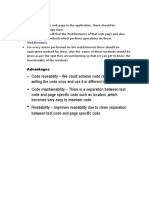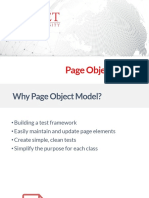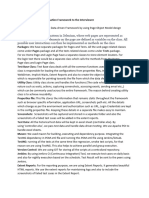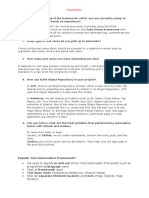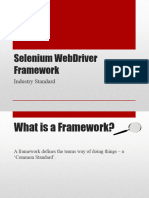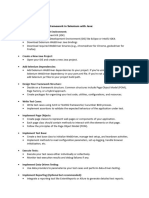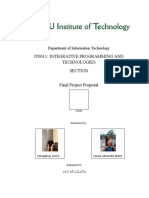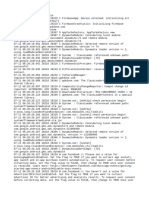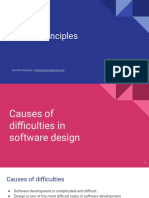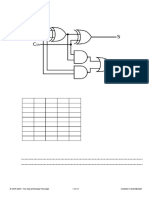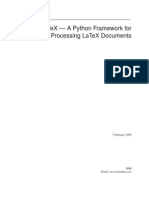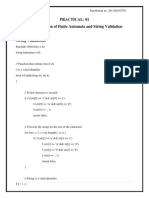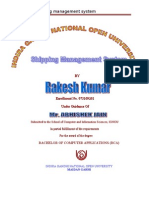0% found this document useful (0 votes)
19 views10 pagesPOM - Page Object Model
The Page Object Model (POM) is a design pattern in Selenium that organizes web pages as separate classes, enhancing code readability and maintainability by separating test scripts from web element locators. Key benefits include improved modularity, reusability, and scalability, making it easier to manage changes in application UI. Best practices for implementing POM involve keeping page classes simple, using meaningful names, centralizing locators, and integrating with testing frameworks like TestNG or JUnit.
Uploaded by
praneeth praneethCopyright
© © All Rights Reserved
We take content rights seriously. If you suspect this is your content, claim it here.
Available Formats
Download as PDF, TXT or read online on Scribd
0% found this document useful (0 votes)
19 views10 pagesPOM - Page Object Model
The Page Object Model (POM) is a design pattern in Selenium that organizes web pages as separate classes, enhancing code readability and maintainability by separating test scripts from web element locators. Key benefits include improved modularity, reusability, and scalability, making it easier to manage changes in application UI. Best practices for implementing POM involve keeping page classes simple, using meaningful names, centralizing locators, and integrating with testing frameworks like TestNG or JUnit.
Uploaded by
praneeth praneethCopyright
© © All Rights Reserved
We take content rights seriously. If you suspect this is your content, claim it here.
Available Formats
Download as PDF, TXT or read online on Scribd
/ 10













